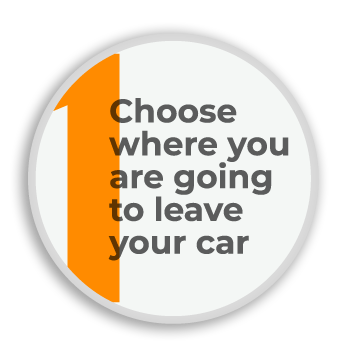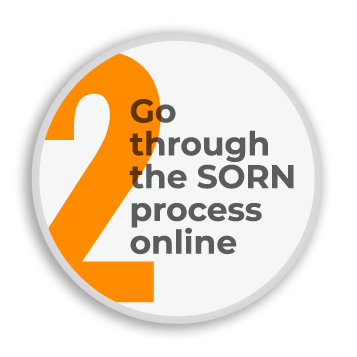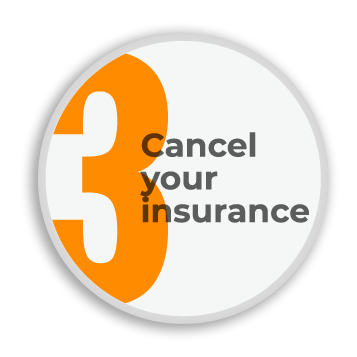



The Ultimate Guide to SORN
SORN is one of those acronyms which lots of motorists throw into conversation without really understanding what it means. That can be quite a dangerous idea, given that getting it wrong and misunderstanding the law could mean that you end up with a fine or points on your licence.
So if you’re one of the many people who don’t really get what SORN is, how it might affect you, and how to complete the process, here’s our ultimate guide to everything you ever wanted to know about SORN.
What does SORN mean?
It’s always worth starting off with an explanation of the terminology involved.
S
OR
N
SORN only applies to cars which are completely off the private road and parked up on private land. Most cars with SORN status will be:
 In a garage
In a garage(whether your garage at home, a lock-up somewhere, or a rented private garage)
 On your driveway or parked in the back garden
On your driveway or parked in the back garden
 In a field or on a piece of land owned by you or someone else
In a field or on a piece of land owned by you or someone else(as long as they’ve agreed you can park it there, of course)
 Parked up in a warehouse or storage facility
Parked up in a warehouse or storage facility
As long as the place you are thinking of parking and storing your car is completely off the public road, then you are fulfilling the criteria. And it should go without saying that you should seek the landowner’s permission before parking your vehicle up on their property.
There are numerous specialist storage facilities around the country where you can store vehicles.
Getting a SORN declaration
You’ve decided for whatever reason that your car is going to be off the road for a set period of time. The next step is going through the formal process of taking it off the road and letting the DVLA know about it. There are a few things which you need to do, and do them in the right order.



The SORN process online
There is some documentation which you will need, so gather all of this together before starting the process
You will need:
A V11 road tax reminder letter, if one has recently arrived in the post to remind you that your car tax will be due at the end of the month.
If you don’t have a V11 road tax reminder letter, then you will need to dig out the V5C owner’s document, which many people refer to as the log book. There’s a 16-digit number on here which you will be prompted to enter if you haven’t had a tax reminder. Registration number of the vehicle you are declaring off the road.
This will also be on the V5 document if you can’t remember what it is. If you have lost your V5C document then the first step should be requesting a replacement from the DVLA. If you’ve lost the log book, or don’t have it for some either reason, then the DVLA will issue a replacement and charge £25 for doing so. If you don’t have the V5C document then you can apply for a new V5C and get your SORN at the same time. Print off the V62 form which lets you apply for the new V5C, and a V890 to request SORN, and send them both off in the same envelope with your payment for £25.
If the address on the V5C is wrong because you’ve moved and forgotten to update it, then you should do this at the same time as requesting your SORN. There is no charge for changing the registered keeper’s address, and you can do this either online or through the post.

Alternatives to Online SORN
Although going online to declare your car off the road is by far the easiest and most convenient option, it’s not the only way of going through the process. There are two other options which you might consider:
- Phone – the DVLA offers a 24 hour automated telephone service which will let you enter the same information through your phone keypad as you do online. There is no charge for using the service, but you might be charged for making the call depending on your phone package. Calls from mobiles might be a lot more expensive than making calls from landlines.
- Mail – you might also decide that you’d prefer to print off the form and send it through the post. You will need the V890 application form, which you can access through the DVLA website. This again uses the same information which you would enter into the website. The obvious downside to the postal route is the time delay involved with posting out forms and waiting for them to be processed at the DVLA. If you’re also registering a change of ownership at the same time as making the SORN, it makes sense to send all the paperwork together, in the same envelope.
Filling the paperwork
Compared with other official paperwork such as applying for a new passport or completing your tax return, getting a SORN declaration for your car is very straightforward. All you need to do is to enter the details from either your V11 tax reminder document, or the number from your V5C owner’s document. Then enter the vehicle’s registration number, which will also be on the V5C or V11 reminder if it’s not something which you know off by heart. After that, you will be asked when you’d like the SORN status to start. You have a couple of choices here and again no choice is better than the other – it will depend on your individual circumstances and whether you want to take your car off the road right away.
- Immediately – this will mean that the SORN status on your car kicks in right away. If you have already put the car in the garage or left the country for six months while your car’s on the driveway, then this is obviously the option for you.
- First of the Next Month – if you know that you want to declare SORN but haven’t quite ironed out the practicalities of where you are going to keep your vehicle, or just need it to drive around in for a few days more, you can opt to have the SORN start on the first day of the next month. Just don’t forget to mark it on the calendar or set up a notification on your phone so you’re not caught driving an untaxed car because you’ve just forgotten what day it is.
What you are not able to do is backdate the SORN by choosing a date in the distant past, hoping to get a refund on any tax you have paid upfront. You are allowed to choose a date at any time in the past month only. You also have the option to choose a date up to two months in advance for the SORN to start. As this is a fairly unusual thing to do, the DVLA ask you to include a letter with the application explaining why you can’t just apply for the SORN nearer the time when the car will be off the road.
Giving your details
Only the registered keepers of vehicles can make the SORN declaration, so on the paper form, the second section of the form asks for your personal details such as name, address and postcode. If you have just bought a car and want to declare SORN so you can do it up, then you’ll need to send the new keeper’s paperwork to the DVLA along with the SORN paperwork.
As with all official paperwork, there’s also a declaration to sign, and a warning that by signing the declaration, you’re agreeing that everything you’ve stated is true. Within four weeks, the DVLA will write back to you and confirm that they’ve received your SORN application and registered on the system. If for whatever reason you don’t get any confirmation then chase this up with the DVLA. There might be an issue with the paperwork, and you could be risking a fine if you don’t verify what’s happened.
Refund of tax paid

Revoking the SORN
As discussed above, most people declare a vehicle as SORN because it’s going to be off the road for a while, but they intend it being back on the road eventually. So what do you do if you have had a car off the road for a while, but are now thinking that it’s ready to drive again, what do you do? Well, there is no standard process for revoking a SORN. All you need to do to legally drive on the road again is to log back into the DVLA website and pay to tax the car again.
If you cancelled the insurance at the same time as declaring the SORN then organise a new policy before you take the car on the road again. If during the time the car was off the road its MOT certificate has expired, then you’ll need to book a test. Having those three key elements of paperwork – the tax, MOT and the insurance – should ensure that you’re not stopped by the police while going about your business.
Buying new tax for your vehicle is very straightforward, and easiest to do online. Just navigate to the DVLA website, and search for the function to pay your car tax online. Most of the people doing this will have received the V11 reminder in the post and will have the reference number from that. If you are retaxing a car which has been SORN, then you have the other option of entering the 16-digit reference from the V5 instead. You’ll also need the car’s registration number, and a debit or credit card to make the payment online. On the same page, you’ll be able to check whether your car’s MOT has also expired, or when it is due to expire.
www.sorn.co.uk provide an easy to use paid for portal when registering a vehicle for statutory off road notification as well as sorn insurance, scrap your vehicle and sell your vehicle options. We are not affiliated with the government or DVLA however we do source vehicle information from the DVLA to search that the correct vehicle is issued as SORN.
